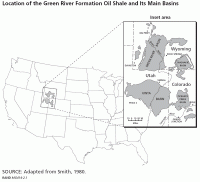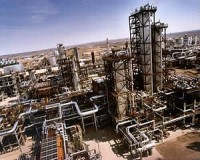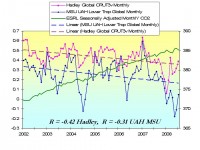Sen. James Inhofe (R-Okla.), Ranking Member of the Environment and Public Works Committee, today praised President Bush for lifting the executive ban on offshore drilling. See press conference here.
“President Bush is to be commended for taking a critical step to insure an increased domestic energy supply for America,” Senator Inhofe said. “Democrats in Congress must stop blocking America;s access to the resources on the Outer Continental Shelf (OCS). With gas prices continuing to skyrocket, suffering Americans are demanding Congress allow more domestic energy production.
“Recent polling has shown 67 percent of the American people now support offshore drilling, with just 18 percent opposed. Congress should follow the President’s lead and lift the moratoriums on domestic energy exploration. Currently, 85 percent of the OCS --an estimated 19 billion barrels of recoverable oil—is off limits. At today’s import levels, this is the equivalent of 35 years of imports from Saudi Arabia. No country on earth has exploration technology as advanced and environmentally sound as ours. Even so, Democrats oppose offshore production based upon misleading environmental grounds. Major spills from drilling and production platforms are nearly non-existent. Both Hurricanes Katrina and Rita, which were massive Category 5’s, plowed through the heart of Gulf oil production just four weeks apart, yet no major spills occurred.” See EPW release here.
This is one of the 4 steps President Bush urged congress to take to improve the energy situation here in the United States in June (see release here). The Bush Administration has repeatedly called on Congress to expand domestic oil production. Unfortunately, Congressional Democrats have rejected virtually every proposal. Now, Americans are paying the price at the pump for this obstruction.
The four recommendations included: (1) Increase access to the Outer Continental Shelf (OCS). Experts believe that areas under leasing prohibitions on the OCS could produce about 18 billion barrels of oil. Actual resources may be greater, but we will not know until exploration is allowed. (2) Tap into the extraordinary potential of oil shale. Oil shale is a type of rock that can produce oil when exposed to heat or other processes. In one major deposit - the Green River Basin of Colorado, Utah, and Wyoming - there lies the equivalent of about 800 billion barrels of recoverable oil. If it can be fully recovered, it would equal more than a century’s worth of currently projected oil imports. Companies are investing in technology to make oil shale production more affordable and efficient. While the cost of extracting oil from shale is still more than the cost of traditional production, it is also less than the current market price of oil, (3) Permit exploration in the Arctic National Wildlife Refuge (ANWR). In 1995, Congress passed legislation allowing oil production in a small fraction of ANWR’s 19.6 million acres, yet President Clinton vetoed the bill. With a drilling footprint of less than 2,000 acres - about 0.01 percent of this distant Alaskan terrain - America could produce an estimated 10.4billion barrels of oil. This is the equivalent of roughly two decades of imported crude oil from Saudi Arabia, (4) Expand and enhance our refinery capacity.
By Lawrence Solomon, Financial Post
Never before in human history has energy been accessible in greater abundance and in more regions, never before has mankind had more energy options and faced a brighter energy future. Take oil, the scarcest of the major energy commodities. In the Americas, proven oil reserves have increased from 170 billion barrels to 180 billion barrels over the last two decades, according to the 2008 Statistical World Review from British Petroleum. In Europe and Eurasia, proven oil reserves almost doubled, from 76 billion barrels to 144. Africa’s proven oil reserves did double, from 58 billion barrels to 117. Even the Asia Pacific region, where China and India are reputed to be sucking up everything in sight, has increased its proven reserves. And the Middle East, the gas tank of the world, shows no sign of slowing down—its reserves soared by almost 200 billion barrels, from a whopping 567 billion barrels to a super-whopping 756.
Bottom line for the world: an incredible 36% increase in oil reserves during the two decades that saw the greatest globalization-spurred oil consumption in the history of mankind. And that doesn’t include the 152 billion barrels in proven oil reserves obtainable from Canada’s tar sands. Is there any reason to doubt that the next two decades won’t build on the steady growth of the last two? These oil reserves aren’t the end of it. These figures—for the year ending December 2006—represent oil that’s not only known to be available, but also economic at 2006 prices using 2006 technology. Since prices have soared in the last year, and technology has improved too, BP’s annual assessment for the 2007 year will show greater proven oil reserves still.
But this is still not the end of it. Unconventional oil reserves are now in play. In 2005, the Rand Corporation estimated that the oil shale in America’s Green River Formation, which covers portions of Colorado, Utah and Wyoming, contains 1.5 to 1.8 trillion barrels of oil, with as much as 1.1 trillion barrels of oil recoverable, an amount comparable to the reserves of four Saudi Arabias. Oil shale becomes recoverable at $95 a barrel, it determined. With oil now trading at $140 a barrel, oil shale exploitation is now very much economic.

See larger image here
Then there’s Canada’s tar sands, with its even greater potential--estimates of the total reserves that may be available top two trillion barrels, or eight Saudi Arabias.

Tar oil production at Athabasca Tar Sands, Alberta, Canada. (Photo courtesy Encyclopedia of Earth)
The world is awash with exploitable energy, both renewable and non-renewable. Availability is not at issue and never has been. Read more about theswe are renewable sources here.
Lawrence Solomon is executive director of Energy Probe and Urban Renaissance Institute.
By Paul MaCrae, False Alarm
Britain’s Hadley Centre for Climate Prediction and Research is in a spot of bother at the moment. On the one hand, the Hadley Centre is a firm believer in the hypothesis that humans are the main cause of global warming and that we’re heading toward catastrophe. It even devotes several of its web pages to waving a nagging finger at those foolish enough or unprincipled enough to believe otherwise.
On the other hand, the Hadley Centre, as part of the British Meteorological Office, is also churning out data showing that the planet isn’t warming at the moment, and hasn’t for the past 10 years or so. What to do? As principled scientists, the Hadley staff can’t cook the books so the temperature figures fit the hypothesis, although at least one other major climate centre is doing its best to keep its figures matching the hypothesis. On the other hand, if the general public got the idea that maybe the planet wasn’t warming after all, despite what it’s been told so often, the people might rebel against punitive carbon taxes and go back to their materialist-loving ways. The Hadley Centre’s solution is a combination of spin-doctoring and let’s hope nobody notices. You find the spin in its finger-wagging admonitions that we mustn’t take this non-warming trend at all seriously. Just temporary. Planet’s still warming. Move along; nothing to see here.
Hadley notes “Earth’s climate is complex and influenced by many things, particularly changes in its orbit, volcanic eruptions, and changes in the energy emitted from the Sun. It is well known that the world has experienced warm or cold periods in the past without any interference from humans”. So, humans are causing “most of the warming” at the moment, but not warming in the past, and there are many other causes of warming as well, all natural, and all, one would think, a lot more powerful - solar orbit changes, volcanoes, variations in solar energy - than anything humans could throw at the planet.
It was warm from 1850 to 1940, too, but in 1940 the planet cooled for 30 years. However, this cooling can’t happen again, according to the Hadley Centre. How does it know? Because its computers tell it so - the same computers that couldn’t predict the recent 10 years of non-warming. But why isn’t the planet warming now? After all, humans are “driving” the climate, aren’t we? Well, not quite. As the Hadley Centre tells us “The recent slight slowing of the warming is due to a shift towards more-frequent La Nina conditions in the Pacific since 1998. These bring cool water up from the depths of the Pacific Ocean, cooling global temperatures.” (incidentally, “slight slowing of the warming” is an unsual way of describing “no warming").

See large image here
So the oceans are driving this non-warming through an La Nina (a cold current), overriding our human-caused carbon dioxide. Maybe humans aren’t as powerful a “driving” force as the Hadley Centre would like us to believe after all. And if humans aren’t the main cause of cooling, maybe we’re not the main cause of warming, either. Read more here.


